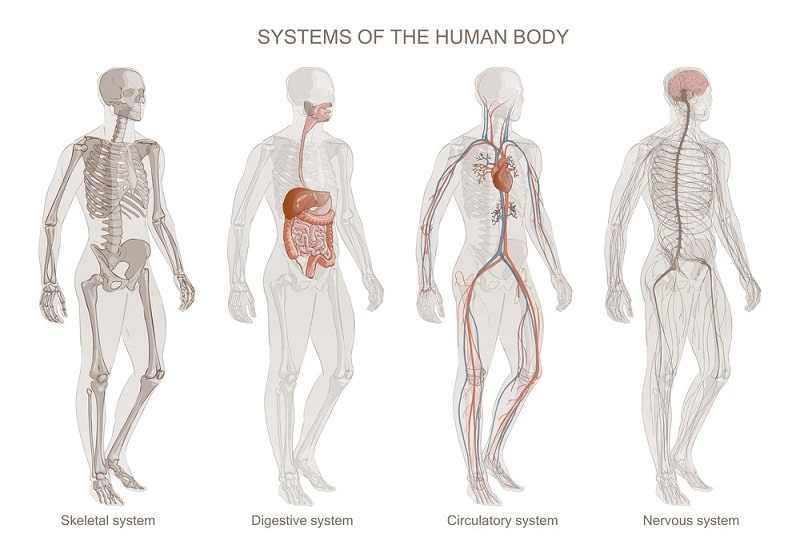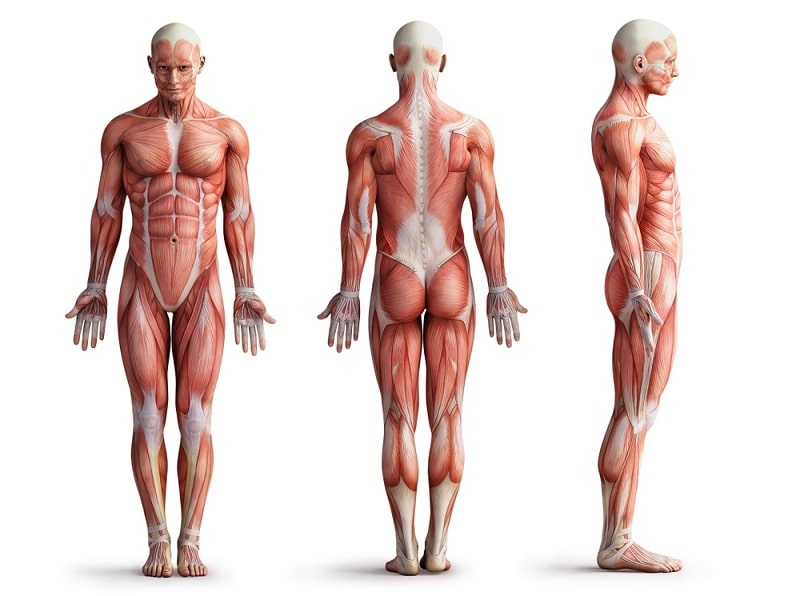The muscular system is one of the most important systems in the human body. It allows us to move, breathe, and pump blood. The muscles in our body are made up of cells that contract and relax to create movement. But have you ever wondered how does the muscular system work?
In this well-researched article, we will delve into the fascinating world of the muscular system, unraveling its secrets and uncovering how it enables us to conquer physical challenges easily.
So buckle up because we’re about to embark on a journey through muscle fibers, contraction mechanisms, and everything in between! Get ready to be amazed by the magnificent workings of our muscular system.
What Are the Functions of the Muscular System?
The muscular system is responsible for the movement of the human body. Muscles work in pairs to move the body parts. Each muscle is attached to a bone at one end and to another bone or tissue at the other.
When a muscle contracts, it pulls on the bones or tissues to move them. The force a muscle can generate depends on its size and the number of fibers that make up the muscle.

What Are the Types of Muscle Tissue?
There are three types of muscle tissues: skeletal, cardiac, and smooth. Skeletal muscle tissue is the type that we use to move our bodies. It is made up of long, thin cells called muscle fibers. These fibers are bound together by connective tissue.
Cardiac muscle tissue is found in the heart. It is made up of short, thick cells called cardiocytes.
Smooth muscle tissue is found in the walls of arteries and other organs. It is made up of small, spindle-shaped cells called smooth muscle cells. After we learn what the functions of the muscular system and the three types of muscle tissue. Let’s discuss the structure and functions of each muscle.

Skeletal Muscle Structure and Function
The human body comprises approximately 640 muscles that work in pairs to move the skeleton. Most skeletal muscles are attached to bones by tendons, which use ATP (adenosine triphosphate) for energy.
Skeletal muscles are composed of long, thin cells called muscle fibers. These fibers are made up of smaller units called myofibrils. Myofibrils contain proteins that give skeletal muscles their structure and function.
The two main proteins in skeletal muscle fibers are actin and myosin. Actin filaments are thinner than myosin filaments and are arranged in a spiral around each myosin filament. Together, these proteins allow muscles to contract and produce movement.
Muscles contract when nerve impulses cause the release of calcium ions from storage areas in the cell membrane. These calcium ions bind to troponin molecules on the actin filaments, which triggers a conformational change in the myosin head domain.
Smooth Muscle Structure and Function
Smooth muscle is a type of muscle that is found in the walls of arteries and other organs. The smooth muscle cells are long and slender and arranged in a spiral fashion. Each smooth muscle cell has a single nucleus.
Gap junctions connect the smooth muscle cells and allow for electrical communication between the cells. When one cell contracts, the gap junctions allow the contraction to spread to the surrounding cells.
Also, smooth muscle is controlled by the autonomic nervous system, which contracts without conscious effort from the individual. The autonomic nervous system regulates many bodily functions, such as blood pressure and heart rate.
Smooth muscle contractions are often slow and sustained but can also be rapid and short-lived. The speed and duration of the contraction are determined by the type of stimulus received by the cell.
Cardiac Muscle Structure and Function
The cardiac muscle is a type of involuntary muscle tissue found in the heart’s walls. These muscles are responsible for the rhythmic contractions of the heart, which pump blood throughout the body. However, the cardiac muscle is unique in structure and function compared to other muscle tissue types.
The cardiac muscle comprises elongated, branched cells interconnected by intercalated discs. These cell structures give the cardiac muscle its striated appearance. The intercalated discs allow for electrical conduction between the cells, which is necessary for coordinated heart contractions. The cardiac muscle cells are also much larger than other types of muscle cells.
The function of the cardiac muscle is to maintain a regular heartbeat. The rhythmic contractions of the heart pump blood through the body and help to distribute oxygen and nutrients to tissues.
The strength of these contractions can vary depending on the body’s needs. For example, muscles need more oxygen-rich blood during exercise. So the heart rate and contraction strength increase to meet this demand.
How Is Contraction Regulated in the Skeletal Muscle?
The nervous system regulates skeletal muscle contractions. Communication between the nervous system and skeletal muscles is necessary for coordinated movement. The nervous system uses electrical signals to stimulate muscle contraction. This process is called neuromuscular junction (NMJ).
When a motor neuron is stimulated, it releases a chemical called acetylcholine (ACh). ACh binds to receptors on the sarcolemma, which causes an electrical impulse to travel down the muscle fiber.
This electrical impulse or action potential causes calcium release from the sarcoplasmic reticulum (SR). The calcium triggers the interaction of actin and myosin filaments, which results in muscle contraction.
Conclusion
The muscular system is a complex and amazing part of our bodies, and understanding how it works can help us to appreciate its importance in keeping us healthy. All of the muscles in our body work together to move our skeleton, pump blood through our veins, assist with breathing, and more. Knowing what each type of muscle does is essential for maintaining overall health and well-being. With regular exercise and proper nutrition, we can keep ourselves strong and improve the function of our muscles.

